

Urusei Yatsura Music Box Interviews
Translated by: Harley Acres
Shinsuke Kazato (風戸慎介)
Cross Interview 1
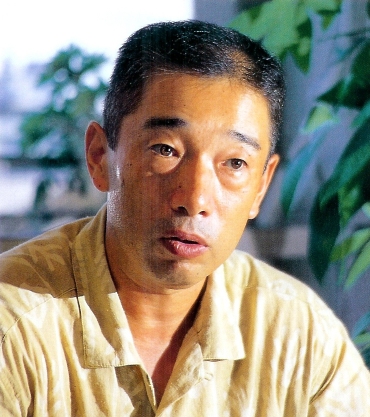
How did you originally get into this industry?
Kazato: About 18 or 19 years ago, when I was in college, I worked as a staff member for Yamaha's Popcon, and I met people in the industry. [1] After that, I wanted to do film music, so I went to America to study. There, I met Kitty's Taga-san, and he invited me to come back to Japan and work on Urusei Yatsura. [2]This is, well, my debut in actually writing songs.
At first, you and Anzai-san were in charge of the music for Urusei Yatsura, but did you have any discussions with each other about the direction you'd go in?
Kazato: No. We must have met two or three times, but it wasn't like we set up a special meeting. However, we occasionally glanced sideways at each other to see what one another were doing. We competed while looking at each other. I think our pieces were created through methods like that.At first, Anzai-san mainly played the synthesizer, and my songs were a bit orchestral, but from the middle of the song I'd also get into synths. However, I don't think I programmed the synths. All mine were played by hand. So if you play it wrong, you have to start over.
Do you have a favorite character?
Kazato: Lum-chan is more vivid than previous anime characters. I would say she has sex appeal. Kotatsuneko and Cherry are also eerily cute, aren't they? Also, Ryoko Mendo. I like open, honest characters.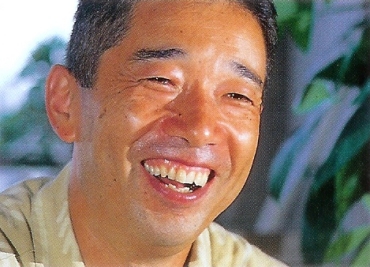
Are there any influences that shaped the music of Urusei Yatsura?
Kazato: When it comes to my roots, it's jazz and modern orchestras. When it comes to jazz, pianist Oscar Peterson was my idol, and I often listened to Stravinsky when it comes to orchestral music. And, when I was a student, I was definitely in the Beatles generation.But speaking of music directly related to Urusei Yatsura, I was listening to Vangelis a lot back then. Track 22 "M-5" and track 25 "M-15" from "Shinsuke Kazato Hen 1" (風戸慎介篇1) were already written. [3] I was listening to a lot of Vangelis at the time, I was buying a lot of Vangelis, and I was wondering if I could create a synth with a human touch. I think I composed track 25 "M-15" as music that represents the vastness of the universe. I regret that people didn't really use it. It's my favorite song (bitter smile). I think it was difficult to use it because the intro was 30 seconds long.
What other songs have left an impression on you?
Kazato: I'd say track 4 "Enter Lum" on "Shinsuke Kazato Hen 1" and later, track 24 "M-11". I made a disco version of it, and experimented with the arrangement. The jazzy version of track 25 "TVM-61" is also good, like this saxophone on it. It's all done with live instruments. Track 27 "TVM-64" is Cherry's theme, this and track 5 "Heian-cho Series 1" from "Shinsuke Kazato Hen 1". This is the first hand-played version made on the synthesizer.Track 13 "Hawaiian Series 2" and track 14 "Suspense Touch 1" from "Shinsuke Kazato Hen 1" are also good. With track 13 "Hawaiian Series 2" I think I came up with a nice melody. I think it was around the time that fusion music like Casiopea was becoming popular, so I created it as my own fusion song. [4] Come to think of it, track 26 "M-16" is one of these. It's a waltz, and after recording it, the violinist said, "That's a nice song. What are you going to use it for?" I answered, Urusei Yatsura, and he said, "What a waste" (laughs).
What did working on Urusei Yatsura mean to you?
Kazato: For me, this was my first anime project, so I was able to experiment a lot. I tried things like having the bassoon play the melody, even though it wasn't originally an instrument that could make a melody. I also listened to various kinds of music. I was desperately trying to analyze famous songs and think about composition in more detail than I do nowadays.Even when recording, I would stay overnight in the studio. Plus, Urusei Yatsura was a program with a strong musical presence. It had a wide range of music. In addition, Shiba-san, the sound engineer, is not only the ultimate in this, but he is also working on the series as a whole. Normally, when it comes to heavy scenes, I try to lighten the music or align it.
But for Urusei Yatsura, if the show's fun, the music will be enjoyable too. That's what makes the music memorable. That's what's good about it. After all, when composing the music, we talked about trying not to make it feel like an anime overall. We were told not to worry about syncing the music to the images and letting it jump around.
What kind of work have you done since Urusei Yatsura?
Kazato: There have probably been as many different gigs as there are stars in the sky over the course of my career (laughs), but the one that was a big hit in terms of my anime work is Kinnikuman (キン肉マン). Recently, I've also worked on Ultraman Great (ウルトラマングレート) and Legend of the Galactic Heroes (銀河英雄伝説/Ginga Hideo Densetsu).Plus, I also teach composition at a university, so I'm by no means an "anime musician". I've been working on the Argo Musical (アルゴミュージカル) with Kei Ogura-san (小椋佳) for a long time, and together we compose pieces for wind band competitions. [5] We do a lot of things based on pure classical music. Not just anime (laughs).
What would your most representative work be in your overall body of work?
Kazato: "Symphony of the Trees" (木と奏でるシンフォニー/Ki to kanaderu shinfonii”) from the commissioned work Aria of the Mysterious Forest -Orchestra and Marimba- (神秘の森のアリア〈オーケストラとマリンバ〉/Shinpi no mori no aria 〈okesutora to marinba〉) (1991). It won the third Asahi Composition Award in 1992, and was the theme piece for the 1993 All Japan Wind Orchestra Competition. "Turnbull March" (ターンブルマーチ). Also, a concert, which was the first Music Train's "From Akatonbo to Ultraman," (赤とんぼ発 ウルトラマン行/Akatonbo-hatsu Urutoraman-yuki) which was held in 1991.Thank you very much for your time today.
Fumitaka Anzai (安西史孝)
Cross Interview 2
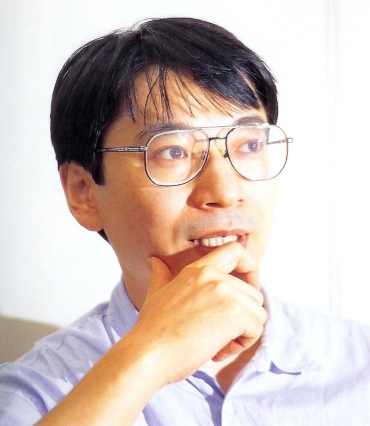
First of all, how did you come to this industry?
Anzai: Initially, I was working part-time as a demonstrator at a Roland showroom. There, professional musicians asked me if I could help them with their synths, and I was asked to help out as a player who could operate them. That was about 17 years ago. I had already learned how to compose music, but now I was able to see how to actually write songs on sheet music and how to deal with problems on the spot.What made you decide to work on Urusei Yatsura?
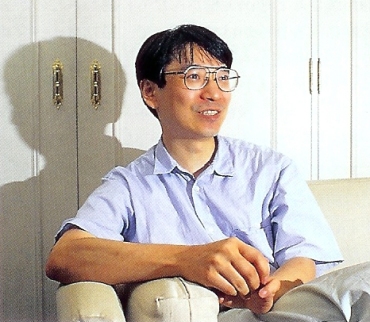 Anzai: At the time, I was in a band called "Cross Wind," and the leader of "Cross Wind" was Hayakawa-san, the music director for Urusei Yatsura. [6] So, when Hayakawa-san told me, "I'm going to do the music for Urusei Yatsura as my next project," and I said, "Ah, I'll do the music," and then it became a formal position (laughs). Until then, I had never done any full-time composing work.
Anzai: At the time, I was in a band called "Cross Wind," and the leader of "Cross Wind" was Hayakawa-san, the music director for Urusei Yatsura. [6] So, when Hayakawa-san told me, "I'm going to do the music for Urusei Yatsura as my next project," and I said, "Ah, I'll do the music," and then it became a formal position (laughs). Until then, I had never done any full-time composing work.
The music for Urusei Yatsura is also composed mainly using synthesizers.
Anzai: Yes. At that time, I don't think there was any musical accompaniment that was created entirely using synthesizers. The standard practice was to use live instruments such as an orchestra to create accompaniment music, and to create sound effects using synthesizers. But, I thought that the sound of techno would definitely suit the chaotic scenes of the series. So, when I told Hayakawa-san about it, he was also a newbie at the time, and he said, "If you make it and give it to them, they will have no choice but to use it, so let's do it," (laughs) At first, Shiba-san, the sound director, was apparently worried that it would clash with the synth sound effects (laughs). Well, Kazato-san writes half of the music for live instruments, so I thought it would be a good idea, so I made it with a synth (laughs). Come to think of it, Kazato-san also started using synths later on, and at that time I was also playing the synths as a studio musician (laughs).How exactly did you go about creating music with a synthesizer?
Anzai: First of all, for "Music Capsule," the equipment was probably a Roland System 700 with Jupiter 8 or MC8 RS-505. For "Music Capsule 2," it was completely different, and the drums were digital drums.For the rest, I mainly focused on sampling, using something like a Fairlight CMI. Synthesizers at that time were still analog synthesizers, so the sounds were very unique and sounded very synthetic. It probably doesn't sound like it when you listen to it now, but it was a sound that didn't exist at all at the time, and it must have been a strange, unique sound overall. When I listen to it now, it sounds like a toy and makes me laugh, but back then, the machines were so low-powered that they could only do simple things. Just creating the basic elements required a tremendous amount of wiring. But now I'm just using old analog synths again, and I'm wondering if I can do something with them. Analog synths have a unique flavor, and above all, there aren't many people who can handle something this old (laughs).
What specific feelings did you have when you listened to the music of that time?
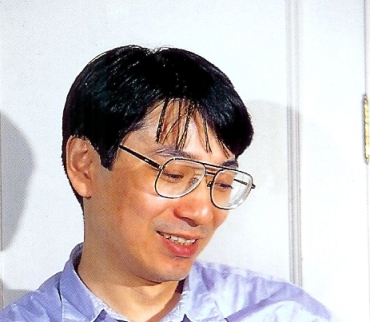 Anzai: First of all, let's start with a song that brings back memories, from the fourth CD, track 5 "Sakuranbo's Un-Good Fortune Premonition". At the time, I was teaching synths at school, and there was a training session where I had to set up the synths. My students were working with headphones on, so I had my hands full. So, I wrote this song during that time.
Anzai: First of all, let's start with a song that brings back memories, from the fourth CD, track 5 "Sakuranbo's Un-Good Fortune Premonition". At the time, I was teaching synths at school, and there was a training session where I had to set up the synths. My students were working with headphones on, so I had my hands full. So, I wrote this song during that time.
Also, track 6 "UFO Comes 1" I have some strange memories of this as well. At that time, when we were releasing a record, there was talk of releasing a rearranged version with a larger lineup. However, when I had written about half of the arrangement for this song, we decided to keep it as it was, and it ended up staying the same (laughs).
Songs like track 11 "Heian-kyo Series 2" were written on the spot in the studio. I was told, "We need a Heian-kyo-style piece, so please come up with something in that style," and I played it on the spot while watching a stopwatch. Track 13 "Confusion 3" I think this one has a strange chord progression for the time, but it has its roots in, I believe, the Moog album "Perrey & Kingsley"? [7] Around 1976, NHK was doing a program about computers using Fortran, and I was impressed by the chord progression used in the program. That was the starting point of the idea for this song.
Track 16 "Big Trouble" is nostalgic. I really like this song, and I've saved it as MIDI data on my forum (the music forum RockLine of NiftyServe, a major computer communications company), so if you like it, please download it and listen to it (laughs). Many of the songs in Urusei Yatsura were done to emulate the style of certain artists, track 17 "Suspense Touch 3" has a Herbie Hancock style, track 24 "M-3" is a song that aims for a 007 style. Songs like track 18 "Let's Go, Go, Big Chase 1" and track 19 "Let's Go, Go, Big Chase 2" were experimental songs at the time, focusing on patterns that humans could never play. It's not that rare these days, though.
Track 22 "M-1" was a song I wrote because I was asked to make something in the vein of The Exorcist, and it was actually written as the theme for Tetsuro Tanba's Great Spirit World (大霊界/Daireikai). [8] However, at that time, the project itself for Great Spirit World came in handy, and it was here that it finally saw the light of day. Like this song, "Music Capsule 2" had a policy of having songs that could be listened to independently as music, so there are many longer songs such as track 22 "M-1" to track 32 "M-14". Also track 16 from Only You is really good, that song played during the beef bowl scene on Planet Elle. I also quite like the song that was played a little before that when the spaceship entered the port on Planet Elle.
Thank you very much for your time today.
Koji Nishimura (西村コージ)
Cross Interview 3
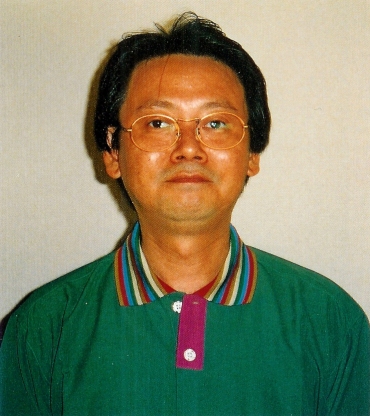
Can you tell us about how you made your debut?
Nishimura: My first experience was at Yamaha's Light Music Contest. There, I was invited by former Wild Ones members Kunihiko Kase-san (加瀬邦彦) and Yoshiaki Ueda-san (植田芳暁), and that's how I got into the entertainment industry. My first experience was at Nabe Productions, in 1970. I've been working as a guitarist since around 1980, working behind bands like the Candies.So, about 15 or 16 years ago, I became a freelancer working with Nabe Productions, and right after that, producer Hayakawa-san approached me. Actually, I've known Hayakawa-san for a long time, and we had talked about working together, but that idea finally came to fruition with the music for Urusei Yatsura.
So when you were asked to do the soundtrack for Urusei Yatsura, how did the first meeting go?
Nishimura: First, the producers gave me an impression of what they had in mind, and then they gave me a music menu. However, at first I didn't really understand the style they had in mind, and I felt like it would end up being completely different from what I wanted to do. So I made dozens of songs and I asked myself, "Which ones fit the style they're looking for?" and brought those to them. From there, the producer cut them down and would say, "This one doesn't fit what we're looking for."What was the most difficult part?
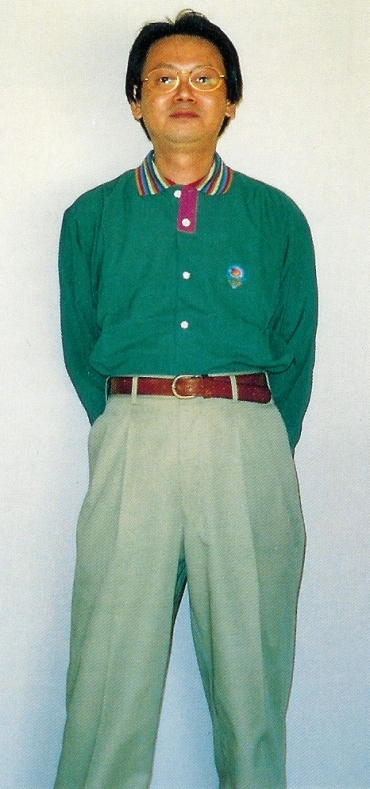 Nishimura: It was a lot of work. When I say it was hard, I mean it was all hard (laughs). I had never worked on a show, and I didn't even know what Urusei Yatsura was at first. It was like starting from scratch.
Nishimura: It was a lot of work. When I say it was hard, I mean it was all hard (laughs). I had never worked on a show, and I didn't even know what Urusei Yatsura was at first. It was like starting from scratch.
Well, through working on this kind of theatrical accompaniment, I began to see people's speech and movements on the screen more closely. When people were talking, I wondered what kind of music should be played in the background. I learned a lot from Urusei Yatsura.
I was also told to make a lot of comical songs, but that was quite difficult. Even though they asked for "a lot," there aren't ultimately that many of them.
Do you have any favorite songs?
Nishimura: Track 10 called "Winter Night View," which I personally like. However, it seems like other people didn't really get it. When I created it, I wanted to create an image of someone standing alone on a winter night and wondering what they were thinking.Also, there's "Lum no Ballad," which was also used in Only You and was released as a single at the time.
Come to think of it, track 3 "Music Tour Theme 1" I think the idea for this was a toy march, and I did it with a synthesizer. Therefore, the sound quality was quite similar and it was difficult to record. It was difficult to get the balance right, and I had to work very hard on the mixing. It was very difficult to do anything that could be called "mixing" with the synthesizers of the time. Well, it seems that some people were able to. However, it's difficult to choose a favorite. After all, there's no such thing as perfection, so I can't say it's absolutely perfect!
How about your favorite character?
Nishimura: When it comes to characters, it's Kotatsuneko. I don't know why, but I feel a strange affinity for him (laughs). As for the girls, it's Lum-chan. However, the one thing that bothers me is when I'm working with Fumi Hirano because she really gets into being Lum-chan. Their personalities are also very similar. Fu-chan herself even said, "we're completely the same," so I guess she really was into playing that role.Come to think of it, since she was asked to sing "Lum no Ballad" she was also given the opportunity to do a solo album. So, when Fu-chan was scheduled to perform her first concert, she was allowed to hold a guitar for the first time in a while (laughs).
What kind of work have you done since Urusei Yatsura?
Nishimura: When it comes to anime soundtracks, the one I got to do after that is Stop!! Hibari-kun! Before that I had a chance to perform in a musical for the Takarazuka Revue, and I became addicted to it, and eventually moved to Takarazuka. I'm originally from Tokyo (laughs). [9]Is Takarazuka your main focus now?
Nishimura: That's right. But I'm the youngest one there. There are great teachers there. I feel like I'm still in the early stages, and I don't really have a masterpiece yet.That's how difficult it is to make music. Women are divided into male and female roles. Then, in terms of musical notes, the range becomes limited. When trying to convey the feeling of being male or female, the vocal range ends up being impossible. It is quite difficult to make it work. That is the challenging yet rewarding part, though.
Thank you very much for your time today.
Katsu Hoshi (星勝)
Cross Interview 4
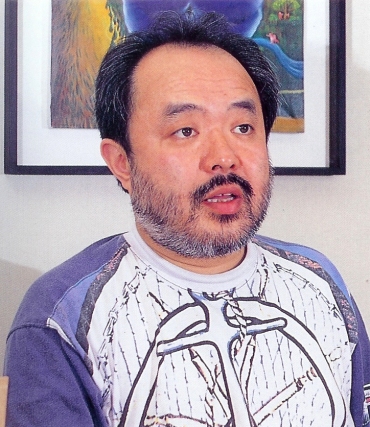
First, could you tell us about your musical roots?
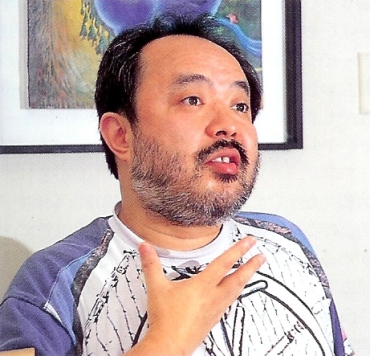 Hoshi: I liked the prototype of later musical developments, such as kayokyoku. [10] My grandfather on my father's side used to play gidayu, and I think I was influenced by that, but before I got into Western music, I remember I liked Michiya Mihashi (三橋美智也). [11]
Hoshi: I liked the prototype of later musical developments, such as kayokyoku. [10] My grandfather on my father's side used to play gidayu, and I think I was influenced by that, but before I got into Western music, I remember I liked Michiya Mihashi (三橋美智也). [11]
Then, in high school, when American pop music was at its peak, I discovered Presley and then the Beatles. So, I had been playing in an amateur band for a while before the GS boom, but when I was able to make my debut, it was right around the time the GS boom was taking place. [12] So, in 1967, a GS called the Mops was created to capitalize on the boom. The lyrics for "Can't Wait Until Morning" (朝まで待てない/Asa Made Matenai) were written by Yuu Aku-san (阿久悠), which was his debut work and I worked on that, along with the music for Kunihiko Murai-san's (村井邦彦) second or third album, as well as "Moonlight Mask" (月光仮面/Gekko Kamen). In Mops, I basically played guitar, but on "Moonlight Mask", I also did the vocals. Well, that's how I continued my activities for about eight years.
Have you been composing since then?
Hoshi: I'm more of an arranger than a composer. Initially, I wasn't someone who could read music, but I started reading music as I needed it for recording, and I started to get interested in other instruments. The rest was self-taught. However, as I started to get interested in arranging, I started thinking that it would be great if I could do it with an orchestra. At that time, Yamaha's Popcon had come about and I was able to use a full orchestra, so I did my best arranging those songs. However, that didn't mean I had to go into classical music or stay in rock music. For example, I also like the songs by Cool Five (クール・ファイブ). [13] Just because I like what I like doesn't mean I have a policy and follow it. I just like what I think is good. What can we do if we simply accept all of these things? I started thinking about this in the 1970s.During that time, I met Yosui Inoue-san (井上陽水) and I was asked to help him when he made his debut... and that's when I started calling myself an arranger by profession.
Also, Taga-san from Kitty was the director for Yosui-san at the time, and as a result, I was given the opportunity to arrange music for Yosui-san, Ogura-san, and Kisugi-san, and also to compose music for films connected to Kitty. [14] I guess that's how I got the opportunity to do it. Well, that led to Urusei Yatsura 2: Beautiful Dreamer much later.
You were in charge of the music for Urusei Yatsura 2: Beautiful Dreamer. Could you tell us more about that?
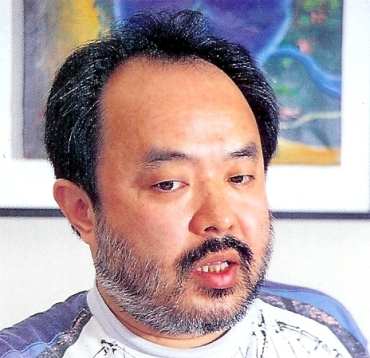 Hoshi: Before the production, I had repeated sessions with the staff and we became good friends. The director himself is a quiet person, but he knows exactly what he wants to do. [15] It is true that what he is making is for entertainment, but he has the will to put a message into it. Not all animated films are like that, but... unlike live-action films, sometimes it is more effective to distort things to the extreme. The parts where everyone is making a lot of noise have a pop feel, and the parts that have a sense of scale have a classical feel, though not a rock opera. Urusei Yatsura 2: Beautiful Dreamer has a different dimension, or rather, a mysterious expansiveness, and I was able to achieve that sort of effect. In other words, it was a work where I could use all the elements of music that I like, from rock to classical. So it was a very enjoyable job.
Hoshi: Before the production, I had repeated sessions with the staff and we became good friends. The director himself is a quiet person, but he knows exactly what he wants to do. [15] It is true that what he is making is for entertainment, but he has the will to put a message into it. Not all animated films are like that, but... unlike live-action films, sometimes it is more effective to distort things to the extreme. The parts where everyone is making a lot of noise have a pop feel, and the parts that have a sense of scale have a classical feel, though not a rock opera. Urusei Yatsura 2: Beautiful Dreamer has a different dimension, or rather, a mysterious expansiveness, and I was able to achieve that sort of effect. In other words, it was a work where I could use all the elements of music that I like, from rock to classical. So it was a very enjoyable job.
How do you feel when you listen to the music from that time now?
Hoshi: The songs on this album have a gentle atmosphere overall, and I like all of them. For example, in the variation of the main motif, the main melody is played by the piano. In reality, the use of strings would have given a greater sense of scale, but I dared to use a single piano to create a broader atmosphere. Also, in songs like track 3 "Edge of the Pond", the guitar sounded too much like Masayoshi Takanaka (高中正義). [16] However, I prioritized that one because it fit perfectly with that scene. I wanted something like track 6 "We Expect" to have a more fantastical feel, so I decided to ask Oku-kun to play the guitar on it instead of me. Oku-kun was the main pianist on this project. He was the one who actually worked on the music production with Hayakawa-kun, the music director, and Igarashi-kun, the engineer. This one, track 7 "Beautiful Dreamer Main Theme”, was created as a culmination of the project. As expected, I'm happy to listen to it now. I was able to do a lot of things on this one.Track 7 "BGM-1" is also a motif of the main theme, but there are a lot of xylophones appearing in the middle of this song. Listening to the xylophone can be both fun and sad, but I have the impression that the origin of this kind of musical instrument, where you strike a tone arranged in a row, was somewhere in Africa. So, by applying echo processing to it, I wondered if it would be possible to create a fantastical sound while still being acoustic. This song was created with that in mind. Well, it's a common story, but musical instruments are supposed to be used in certain ways. I want to use it in a way that betrays that. It's a successful song made using that methodology, and I quite like it.
Thank you very much for your time today.
Toshiyuki Omori (大森俊之)
Cross Interview 5
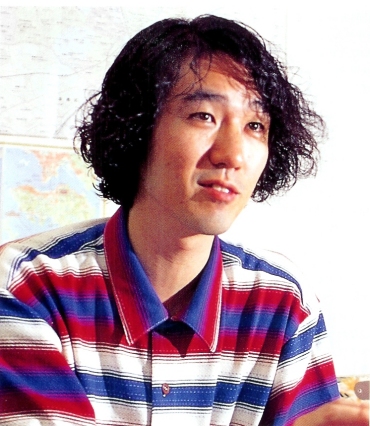
First of all, how did you become a musician?
Omori: I didn't go to music college or anything, but my parents made me learn to play the piano from the age of two as a hobby. That's why I listened to classical music all the time when I was a child. However, when I was an amateur, I liked building and crafting, so I started making my own radio and listening to late-night broadcasts. That's when I started listening to pop and progressive music and thought, "Isn't this great?" So I started a band when I was in high school. At first it was all progressive rock. I'm completely in the prog generation. However, after entering university, I expanded my horizons, from jazz and fusion to regular rock. After that, I started dabbling in new wave music... I was already doing what was popular at the time. [17]I think it's the same for everyone when they were in bands ranging from amateur to semi-professional level, but I was in seven to ten bands at most. It was a time when it was rare for a man to play the keyboard. There were several bands that were on the verge of making their record debut, but instead of that, they moved on to becoming singers' backing bands and things like that. At the same time, I was hooked on recording at home, equipped with multi-tracks, synthesizers, and other equipment in my six-tatami-sized apartment. So, while I was being asked to make demo tapes from various places, I started getting work on commercials.
Come to think of it, one of my fellow home recording enthusiasts around that time was Kenji Kawai. [18] I think he was once in Yuuji Mitsuya's backing band. [19] So, back when he only had four-channel cassettes, I told him, "This is what I have," and he got hooked on it. That’s about it (laughs).
What kind of commercials have you done?
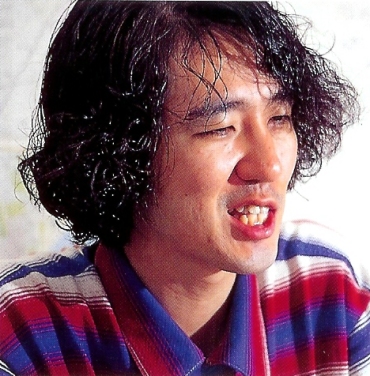 Omori: I still do a lot of commercial work. Recently, I have been working on the JR Tokai "Let's go to Kyoto" (京都に行こう) series, "Dentarion" (デンターライオン), "Nestlé canned coffee" (ネッスルの缶コーヒー), "Toyota's Tercel" (トヨタのターセル) "McDonald's Value Meals" (マクドナルドのバリュー), and many others.
Omori: I still do a lot of commercial work. Recently, I have been working on the JR Tokai "Let's go to Kyoto" (京都に行こう) series, "Dentarion" (デンターライオン), "Nestlé canned coffee" (ネッスルの缶コーヒー), "Toyota's Tercel" (トヨタのターセル) "McDonald's Value Meals" (マクドナルドのバリュー), and many others.
Then, less background music?
Omori: Before working on Urusei Yatsura, I was working on the theme and ending for Genius Takeshi's Cheerful TV!! (天才・たけしの元気が出るテレビ!!/Tensai Takeshi no genki ga deru terebi!!), and I'm currently working on next year's anime series - Dinosaur Adventure (恐竜冒険記/Kyoryu Bokenki), although the title is still tentative. [20] I've written about 100 songs as BGM for it, and it's based on Five Boys Drifting Chronicles (五少年漂流記/Go Shonen Hyoryu-ki). [21] I guess it's about half and half for commercials and anime work. Well, my job is to sleep and wait for a phone call. If you do a job that stands out, you'll end up getting jobs with similar themes.Then you received a phone call requesting you for Urusei Yatsura: The Final Chapter?
Omori: That's right (laughs). I was in the same student big band as Kitty's music director, Takahashi-san. So, I worked with him on a lot of things, and one day... I got a quick phone call asking, "Would you like to do an Urusei Yatsura movie?" and I said, "Sure." [22]So, were you familiar with Urusei Yatsura before you started working?
Omori: I used to read the manga and watched the anime. However, when I looked at the previous films for Urusei Yatsura, I found that they were quite heavy, except for the one Itakura-san did. [23] When it comes to movies, you need a sense of scale, etc. But I was surprised because I thought it would be a little more poppy and lighthearted.How was the actual work?
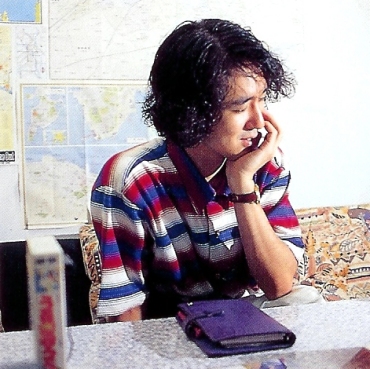 Omori: First, we looked over the storyboards with the director, Dezaki-san, and the sound director, Shiba-san, and they said things like, "This is how the song should be organized, starting with how many cuts there are," and then I asked them, "Is it okay if we do it this way?" [24] After that meeting, a music menu was sent to me and I was ready to go.
Omori: First, we looked over the storyboards with the director, Dezaki-san, and the sound director, Shiba-san, and they said things like, "This is how the song should be organized, starting with how many cuts there are," and then I asked them, "Is it okay if we do it this way?" [24] After that meeting, a music menu was sent to me and I was ready to go.
Do you have any particular songs that you have a special fondness for?
Omori: Track 12 "Fly with Me" was supposed to be used in the scene where Lum flies around because she thought she had been betrayed. When I made this, they said, "No, it needs to be a bit sadder," so they rejected it. So, track 7 "Alone," which I recorded at home, replaced it. Originally, I wanted to do it with an orchestra, but I was rejected after the recording had finished, and I had already used up my budget (laughs).I just thought you were trying to differentiate from the rest of the scenes by going all out with the synths (laughs).
Omori: I hope you look at me warmly like that (laughs). As the creator of the album, I felt sad that, due to various circumstances, I had to do it all as a homemade craft. I was able to use Keystone's A Studio, which is a fairly large studio in the Kitty building, and we were able to record the string instruments beautifully.As for the parodies of professional baseball news, I tried to make them funny so that everyone could understand where they were coming from.
Are you particular about things like orchestral music?
Omori: No. I like it, and I've done a lot of work like that, but as far as my hobbies, I really like acid jazz and house music. The other day, I was featured in Megumi Hayashibara's "SpHERE." I had the pleasure of creating some very elaborate rap-like pieces, such as the first track "Until Strawberry Sherbet" and the last "Rousseau's Forest/Chagall's Sky". [25]Also, recently I like the ZTT work for Seal produced by Trevor Horn because it feels authentic. [26] From now on, I want to create things that feel real.
I wish you the best. Thank you very much for your time today.
Mitsuru Kotaki (小滝満)
Cross Interview 6
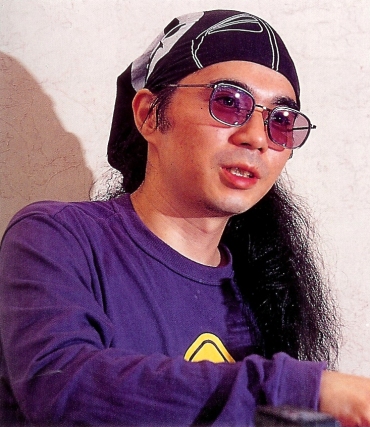
First of all, how did you get into music?
Kotaki: I started playing the piano as part of my lessons since I was about three years old.However, when I was in junior high school, I started listening to progressive rock and rock music on the radio, and I thought it was interesting. That started around 1970, so I was listening to everything from Pink Floyd to T.Rex in real time, as well as German artists like Neu! and Can.
So I started a band in high school, and when I entered college, I formed a band called Cinema - although it has nothing to do with Picasso's "Cinema", we debuted on CBS Sony in 1980. We just released one album and it went bust (laughs).
After that, there were many twists and turns, and around 1985 I participated in the group Jun Togawa and YAPOOS (戸川純とヤプーズ) as a keyboardist and composer, I was a song producer for Yoshiyuki Osawa-san's (大沢誉志幸) band, and I was asked by an acquaintance to do the background music for an underground play. While I was doing all that, I ended up producing Akio Togashi-san (富樫明生) for Kitty. As a result, the music director asked me if I would like to do the music for Urusei Yatsura.
Were you familiar with Urusei Yatsura?
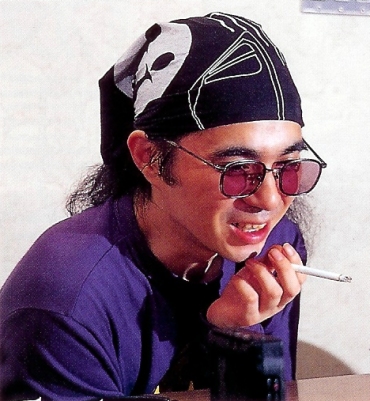 Kotaki: Yeah. I had all the comics and watched the anime. I'd say I was just a casual fan myself, but somehow I kept pushing myself to read it. Halfway through its publication, I thought it was time to read it. I didn't stop, so I guess that's why I found it so appealing.
Kotaki: Yeah. I had all the comics and watched the anime. I'd say I was just a casual fan myself, but somehow I kept pushing myself to read it. Halfway through its publication, I thought it was time to read it. I didn't stop, so I guess that's why I found it so appealing.
Also, the anime uses some very appealing sounds. So I thought maybe I could do something interesting.
What was it like to have meetings with the other staff members when producing the music?
Kotaki: During the preliminary meeting, we listened to the scene explanations while looking at the storyboards, and then we were given the music menu. However, the sound director, Shiba-san, was very particular about using live instruments, so I often listened to him. I received a request to use a stringed instrument. It seems like they were looking for something extra by adding live strings to it instead of just using a synthesizer.Did you refer to progressive rock songs as a motif for your compositions?
Kotaki: No, I don't have any references or anything like that. In fact, I wanted to do it without stuff like that as much as possible. I try to only create things that come from within.Was there anything you were particularly conscientious of when creating this music?
Kotaki: I was interested in how the sound would play in a theater. I didn't know how far the bass and high frequencies would go, so I was composing music wondering, "Will this kind of sound actually come out?" When I asked about it at the screening, I was relieved that it was mostly okay, but...But the recording at this time was optical. So in terms of performance, it wasn't great. Digital recording has become the norm in the music industry, but in the video industry, analog is still the norm. With digital recording, you can do more things, but it takes more more time. The more choices you have, the more detailed the work becomes. If it were true, it would be possible to do things more quickly, and that is what it is designed for. In the case of video, the artisanal world of cutting and pasting tape and film is still dominated by the analog method, but it is certainly quicker.
Can you tell us about your memories of some of the songs?
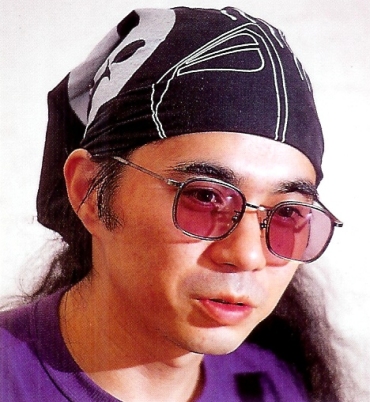 Kotaki: Shiba-san suggested track 13 "The Love of a Tofu Salesman and a Maiden," and it's a song with a violin over a synth. Also, in track 37 "Bitter Cry of Rio," I used a sample of a man's voice from the Middle East. I recorded a lot of secondary audio from bilingual news programs or something on tape, and then I cut out the material that seemed interesting and slapped it together. I wonder if it was the sound of a prayer from the Koran or something? Well, it's scatted, so you wouldn't be able to tell just by listening to it. In this way, the material is first processed more and more, and the original parts are erased. Generally speaking, it always feels like that. If I kept doing that, I would be a thief (laughs).
Kotaki: Shiba-san suggested track 13 "The Love of a Tofu Salesman and a Maiden," and it's a song with a violin over a synth. Also, in track 37 "Bitter Cry of Rio," I used a sample of a man's voice from the Middle East. I recorded a lot of secondary audio from bilingual news programs or something on tape, and then I cut out the material that seemed interesting and slapped it together. I wonder if it was the sound of a prayer from the Koran or something? Well, it's scatted, so you wouldn't be able to tell just by listening to it. In this way, the material is first processed more and more, and the original parts are erased. Generally speaking, it always feels like that. If I kept doing that, I would be a thief (laughs).
When you're composing a song, you can't match it to the images. Then, for the first time, I saw it overlap with the footage at an event at the Budokan ("Urusei Yatsura 10th Anniversary Everybody's Hot! Summer Vacation in Budokan" (うる星やつら10周年記念 みんなあついぞ! 夏休みinぶどうかん) held at Nippon Budokan on August 18, 1991). However, track 39 "Battle of Love" and track 40 "Hold Your Breath" fit perfectly on screen and were really interesting.
Also, the motifs used in track 5 "The Beauty from Space" and track 47 "Two People Staring at One Another" were created as Lupica's theme.
Lastly, could you tell us about what projects you're working on going forward?
Kotaki: I want to create a visual sound when I make a song, and not just for Urusei Yatsura: Always My Darling. I want the listener to have a visual in their head, they have to be able to see it.Also, I am in the process of creating and storing more and more of my own songs. I've started to feel that it's time for me to leave something of my own behind.
Thank you very much for your time today.
Shigeharu Shiba (斯波重治)
Cross Interview 7
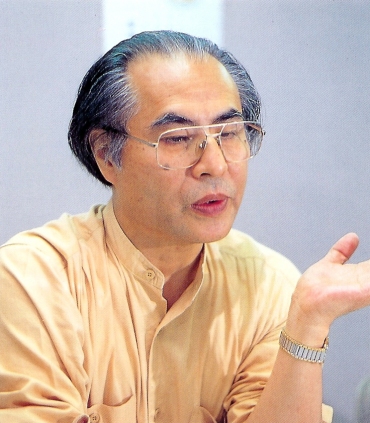
First of all, could you tell us more about your work as the sound director for Urusei Yatsura?
Shiba: Well, as for Urusei Yatsura, there's nothing special about it. After all, the direction of the production is decided at the drawing stage. Whether it's a literary masterpiece or a gag story, once the storyboard is created and the rush is created, my job is to add sound to the created world, including the actors' performances. I guess you could call it a job that involves directing and composing sounds.Specifically, how was your interaction with Oshii-san, the general director?
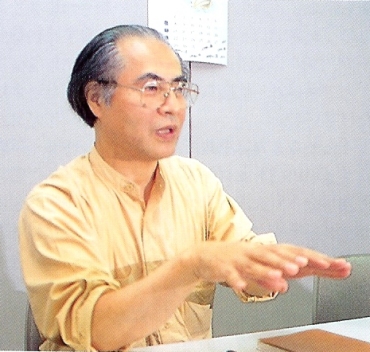 Shiba: Well, Oshii-san was very ambitious. I'm not a fan of manga myself, so I hadn't read the original, but I had heard that it was an interesting work. I had the impression that it was going to be a big production. So, after looking over the original work, I talked to Oshii-san and he said, "The gaps between panels are interesting," and "This is ultimately about the eternal issues between men and women," or something like that.
Shiba: Well, Oshii-san was very ambitious. I'm not a fan of manga myself, so I hadn't read the original, but I had heard that it was an interesting work. I had the impression that it was going to be a big production. So, after looking over the original work, I talked to Oshii-san and he said, "The gaps between panels are interesting," and "This is ultimately about the eternal issues between men and women," or something like that.
And then there's the time spent working on the dubbing. Oshii-san sits in the highest seat behind me and doesn't say anything too loud, but I can see his expression on the sub glass in front of me as I watch the decibels of the performance. Sometimes he was grinning or looking bored, and I could easily understand his feelings (laughs).
Oshii-san is a very talented person, and after about a year, his sense of sound began to take shape. So, as a director, he started giving specific instructions regarding the music, and Beautiful Dreamer was where he put that front and center in his work. At that time, the director used a completely different method than before, and he clearly stated the kind of movie he wanted to make, and he also had a clear idea about the music. The truth is that a director can do all of those things. However, there are currently no directors in the anime world who can work from the beginning to the end with a clear and specific image, even down to the sound. With Beautiful Dreamer, Oshii-san became a director who could do that. However, if they all become that kind of director, there will be no more work for people like me. It really comes down to just helping out. Beautiful Dreamer was a fine work in that sense.
For Urusei Yatsura, there were 10 composers alone, wasn't that difficult?
Shiba: No, we didn't create it all at once, and from a sound standpoint, you want BGM no matter how many songs you have. Even if it's a good song, if you use it over and over again, you'll want to change it. What was really helpful was that the folks at Kitty lent us the songs that their company had the rights to, and that allowed us to use whatever songs we thought were good. I was very happy when I was told that. It was really good and I used it a lot. Also, the ending song "Hoshizora Cycling" was on one of the tapes they sent over. Ah, I used it for a funny scene. Then it got promoted to an ending theme. In that sense, Kitty is a great company. Normally, you could use at most 200 BGM songs in a year. Nowadays, it's not uncommon to have 40 to 60 songs.How difficult was the casting process?
Shiba: It was very difficult to work on Urusei Yatsura. First of all, I had an image of Ataru as Yasuo Yamada when he was young, but Yamada was already a hugely popular star with films like Lupin at the time, so it was impossible no matter how I looked at it. [27] So, I held an audition, met Furukawa-san there, and it clicked. However, I just couldn't decide on Lum. I auditioned about 30 people one January, but I couldn't find anyone. Matsuda-san, the manager of the Haiku Association, who is now at Arts Vision, introduced me to Hirano-san. When I auditioned her, she had an atmosphere and a way of speaking that I had never seen before from a voice actor, and to top it off, she ad-libbed a laugh at the end. It was a laugh that was unique to Lum-chan. That's how I decided to cast her.The other difficult part was Machiko Washio, who played Sakura. She was in a theater company called NLT at the time and had not done any animation work at all. But after seeing her stage performances and live TV work, I felt that she was the only choice for Sakura, so I pushed hard and asked her to do it.
Who is your favorite character in Urusei Yatsura?
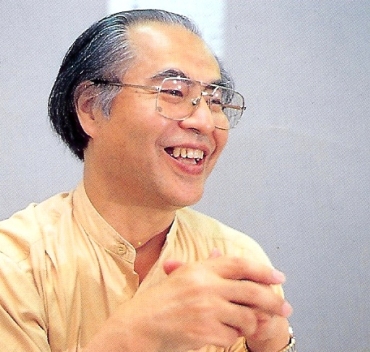 Shiba: I liked the pure-hearted Kitsune. I also like the tanuki, Oshima. Ah, I guess I like the animal characters (laughs).
Shiba: I liked the pure-hearted Kitsune. I also like the tanuki, Oshima. Ah, I guess I like the animal characters (laughs).
Then, did you find it difficult to decide Kitsune's voice?
Shiba: No. I decided right away when I read the scenario and storyboards. I don't have any consultations for guest characters. However, even if there's an actor who I think would be good for a role like this, due to schedule constraints, there are times when they can't do it; actors have bad luck that way sometimes. Even if they play a guest role, there are roles that become bigger and bigger later in the series.Megane, for example, is a character that has been expanded in the anime, right?
Shiba: In the original work, Megane only appears briefly. But in the anime, Oshii-san added his own interesting personality to make the character come alive. When we asked Chiba-san to do that, he gave an even more unique performance. Casting work is very interesting in the sense that you can play catch with the staff and cast. However, there are really fewer productions where you can do that nowadays.Thank you very much for your time today.
Footnotes
- [1] Yamaha's Popcon is their Popular Music Contest. The website for which can be found here.
- [2] Kitty's Taga-san is referring to Hidenori Taga (多賀英典), the founder of Kitty Music Corporation which eventually evolved into Kitty Films and Kitty Entertainment. Prior to founding Kitty, he worked for Polydor.
- [3] These songs can also be found on "Music Capsule 2" before they were collected in this boxset. When he refers to "Shinsuke Kazato Hen 1" (風戸慎介篇1) he's referring to the first disc of this boxset.
- [4] Casiopea (カシオペア) are a famous jazz-fusion and city pop band in Japan. Formed in 1976 they have played together with various line-ups for five decades.
- [5] Argo Musical (アルゴミュージカル) was an annual children's musical theater production.
- [6] Hayakawa-san is referring to Hiroshi Hayakawa (早川裕). He was the music director on the first three Urusei Yatsura films, Miyuki (みゆき) and the live-action film, Sailor Suit and Machine Gun (セーラー服と機関銃/Seeraa fuku to kikanjuu).
- [7] Perrey and Kingsley refers to the electronic music duo comprised of composers Jean-Jacques Perrey and Gershon Kingsley who were early pioneers working with synthesizers in the 1960s.
- [8] This is a reference to the 1990 film entitled Tetsuro Tamba's Great Spirit World: What Happens When You Die? (丹波哲郎の大霊界 死んだらどうなる/Tanba Tetsuro no Daireikai: Shintara Donara).
- [9] The Takarazuka Revue is an all-female musical theater revue based in the city of Takarazuka. Rumiko Takahashi is a fan and has written the story Reserved Seat about it as well as conducted an interview with Takarasienne Maki Ichiro.
- [10] Kayokyoku (歌謡曲) is a type of popular music that developed during the Showa era, essentially a proto-pop music in Japan.
- [11] Gidayu (義太夫) is a type of recitation used in puppet theater. Michiya Mihashi (三橋美智也) was one of the foundational singers for the enka genre of Japanese music.
- [12] The GS Boom (GSブーム) refers to the "group sounds boom". This was the rise of Japanese pop bands in the wake of the Beatles playing the Budokan in 1966. This lead to the fusion of Japanese pop (kayokyoku) and Western pop to create modern J-Pop. Bands that launched in the wake of the GS Boom include The Mops, The Golden Cups, The Tigers, The Tempters and The Spiders.
- [13] Cool Five (クール・ファイブ) refers to Hiroshi Uchiyamada and the Cool Five (内山田洋とクール・ファイブ), a Japanese kayokyoku group.
- [14] Here he is referring to Yosui Inoue (井上陽水), Kei Ogura (小椋佳) and Takao Kisugi (来生たかお). Kisugi sang "Will Tomorrow Be Brighter" (明日晴れるか/Ashita Hareru Ka), the first ending theme for Maison Ikkoku.
- [15] The director he is referring to here is Mamoru Oshii (押井守). We have numerous interviews archived with him here at the website.
- [16] Masayoshi Takanaka (高中正義) is a noted city pop musician. As he was a Kitty Records artist, some of his songs are heard in cafe and restaurant scenes as background music in Urusei Yatsura and can be found on the extra discs of the Complete Music Box.
- [17] In addition to the series Omori worked on that are listed in the article from the time of publication, he worked on a number of anime series in the following years including JoJo's Bizarre Adventure (ジョジョの奇妙な冒険/Jojo no Kimyo na Bouken) and it's Golden Wind sequel, Neon Genesis Evangelion (新世紀エヴァンゲリオン/Shinseiki Evangelion), Shaman King (シャーマンキング) and Pretty Guardian Sailor Moon Crystal (美少女戦士セーラームーンCrystal/Bishojo Senshi Seeraa Moon Crystal).
- [18] Kenji Kawai (川井憲次) would go on to become Mamoru Oshii's most frequent musical collaborator on series such as Mobile Police Patlabor (機動警察パトレイバー/Kido Keisatsu Patoreibaa) and Ghost in the Shell (攻殻機動隊/Kokaku Kidotai), however he also worked on the music for Maison Ikkoku and Ranma 1/2 as well. An interview with him from the Maison Ikkoku Complete Music Box Set is available here on the site.
- [19] Yuji Mitsuya (三ツ矢雄二) is the voice actor who portrayed Tatsuya Uesugi in Touch and Dr. Tofu in Ranma 1/2.
- [20] The series will undergo a slight change of name, or rather an expansion of its name. Ultimately it is called, Dino Adventure Jurassic Tripper (恐竜冒険記ジュラトリッパー/Kyoryu Bokenki Jura Torippa).
- [21] Five Boys Drifting Chronicles (五少年漂流記/Go Shonen Hyoryu-ki) is the Japanese title for Jules Verne's Two Years' Vacation.
- [22] The fifth Urusei Yatsura film had a complicated history. Originally an original story was in the works, Takahashi had read and approved the script and was preparing to design the original characters that would appear (as she has done for every film adaptation of her work) when producer Shigekazu Ochiai decided to scrap the film and adapt the conclusion of the manga which Takahashi had just published. It is detailed in his production diary which you can read on the site.
- [23] This is referring to the musician on Urusei Yatsura 4: Lum the Forever, which was written by Bun Itakura (板倉文).
- [24] This is referring to director Satoshi Dezaki (出崎哲) and sound director Shigeharu Shiba (斯波重治). Shiba worked on the anime, films and OVAs for Urusei Yatsura, Maison Ikkoku and Ranma 1/2.
- [25] This is Megumi Hayashibara (林原めぐみ) (the voice of female Ranma in Ranma 1/2 and Ichigo in Kyokai no RINNE)'s 1994 album.
- [26] Trevor Horn is one of the most famous British producers who found tremendous fame in the 1980s. He was a member of The Buggles and produced ABC, The Art of Noise, TaTU, Frankie Goes to Hollywood, Seal, Robbie Williams, LeAnn Rimes and many, many others.
- [27] Yasuo Yamada (山田康雄) is the original voice of Arsene Lupin III in the iconic Lupin III anime. He played the role from 1971 until his death in 1995.

うる星やつらコンプリートミュージックボックス
|